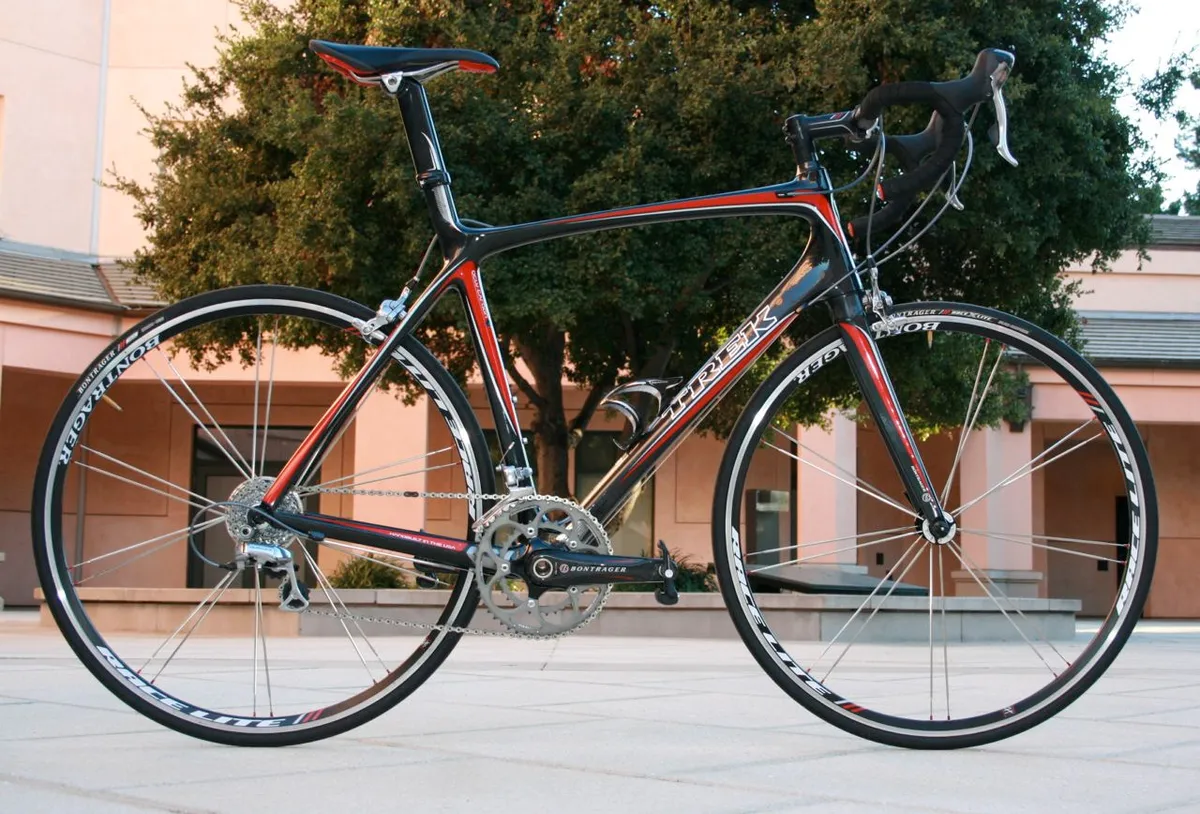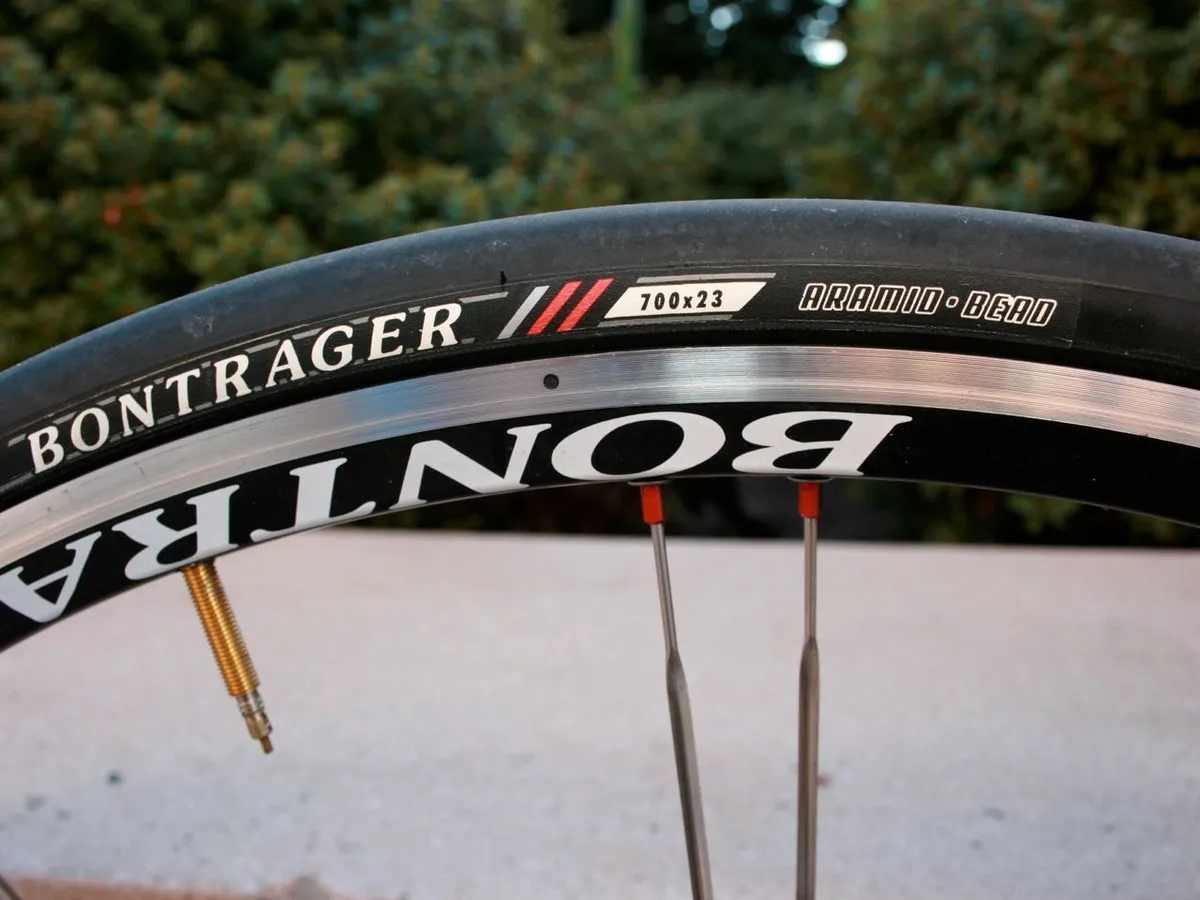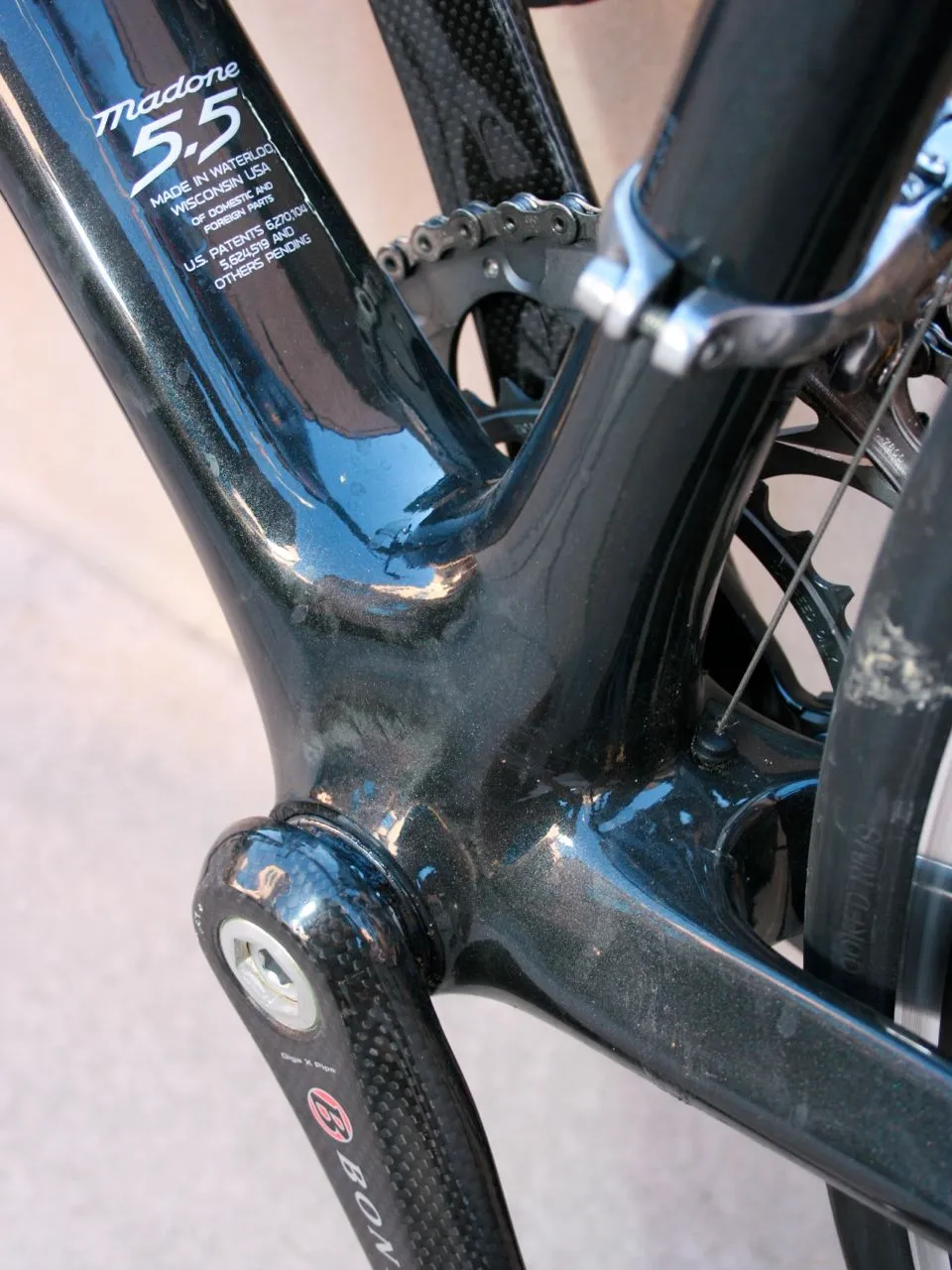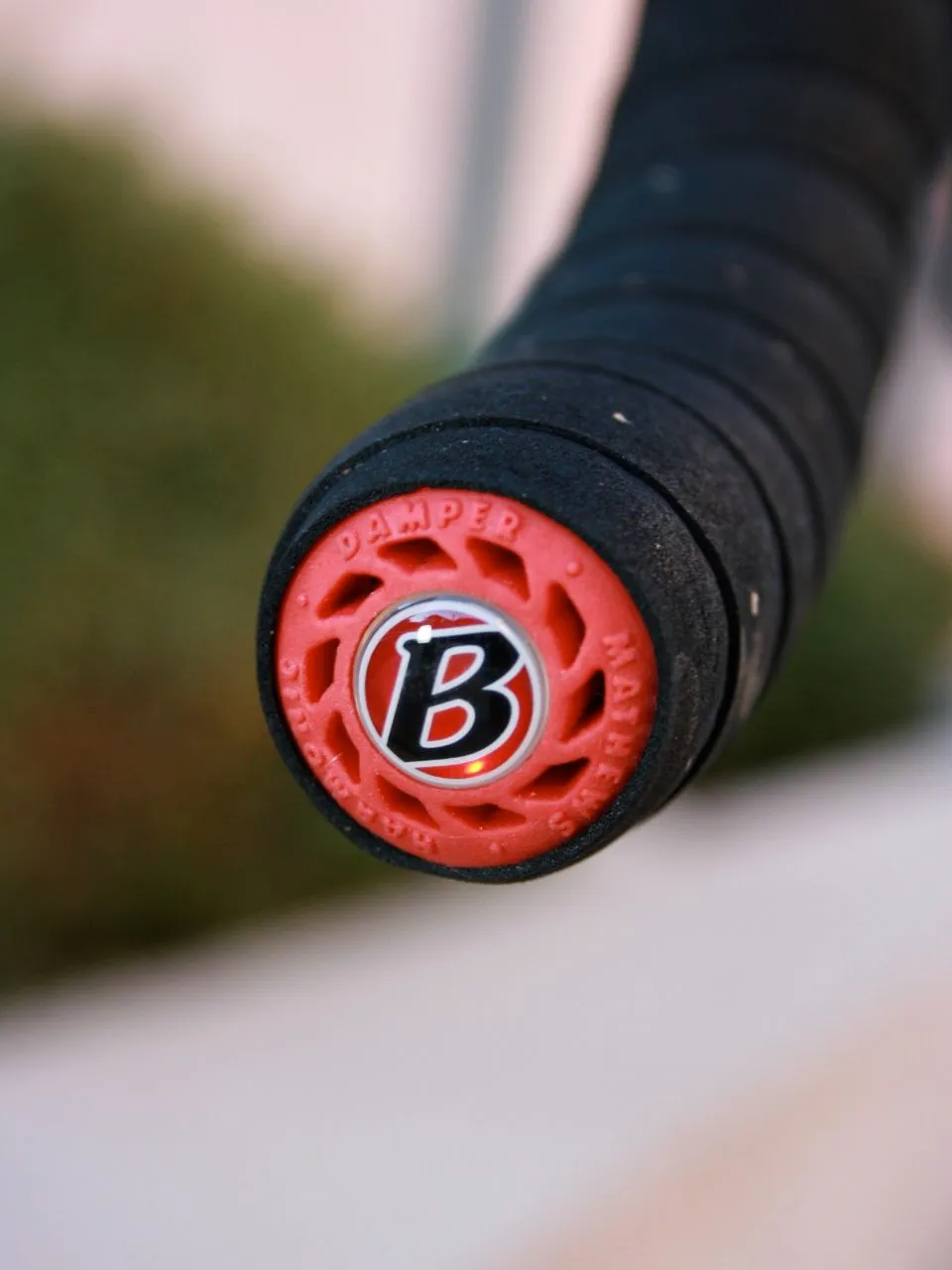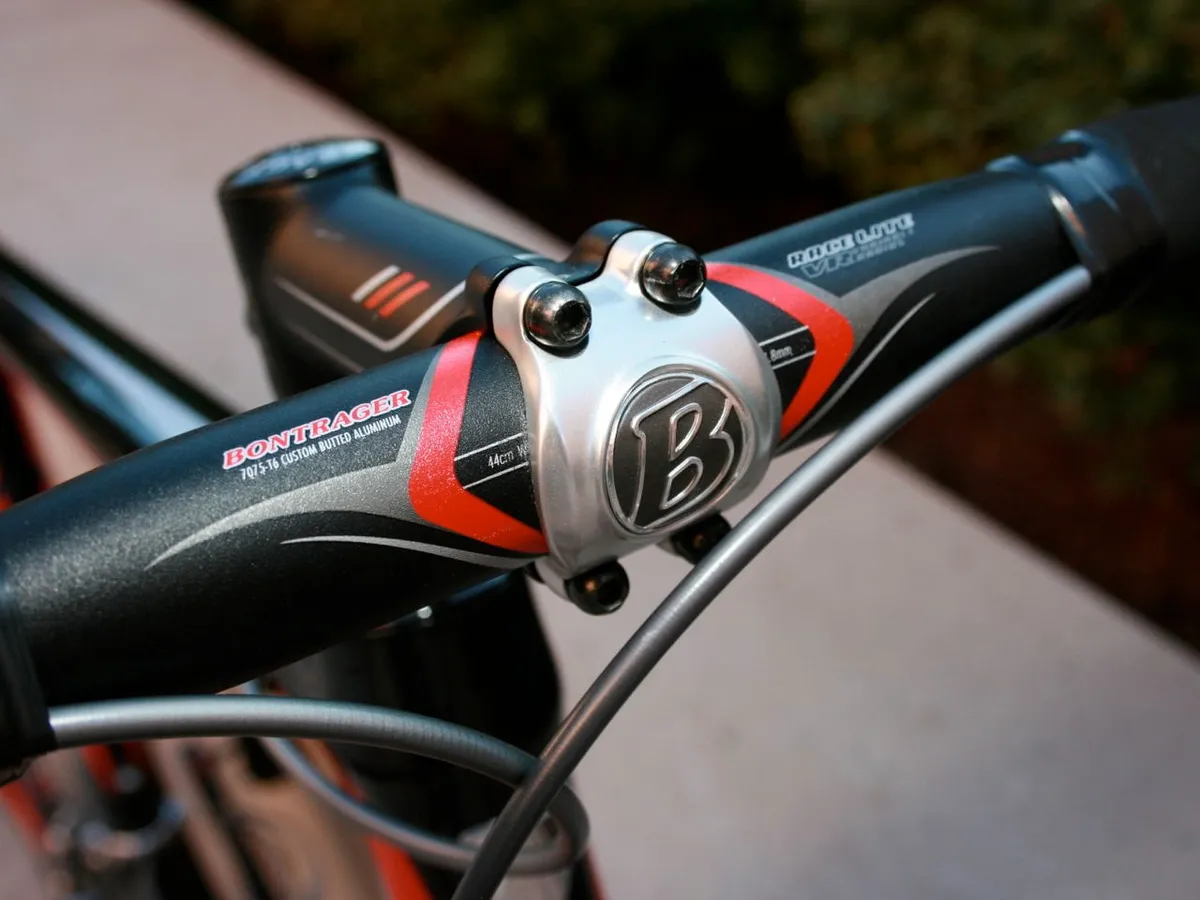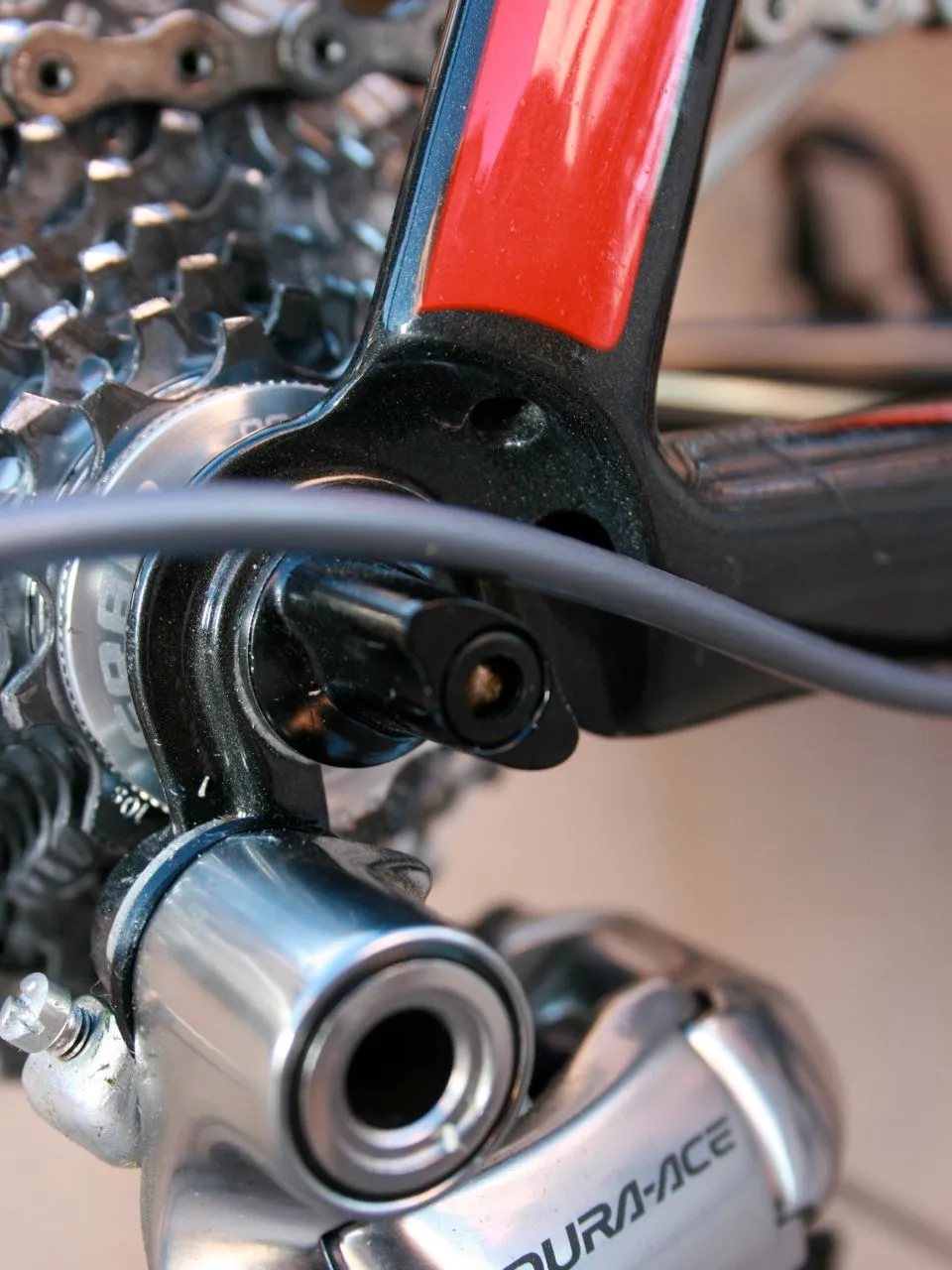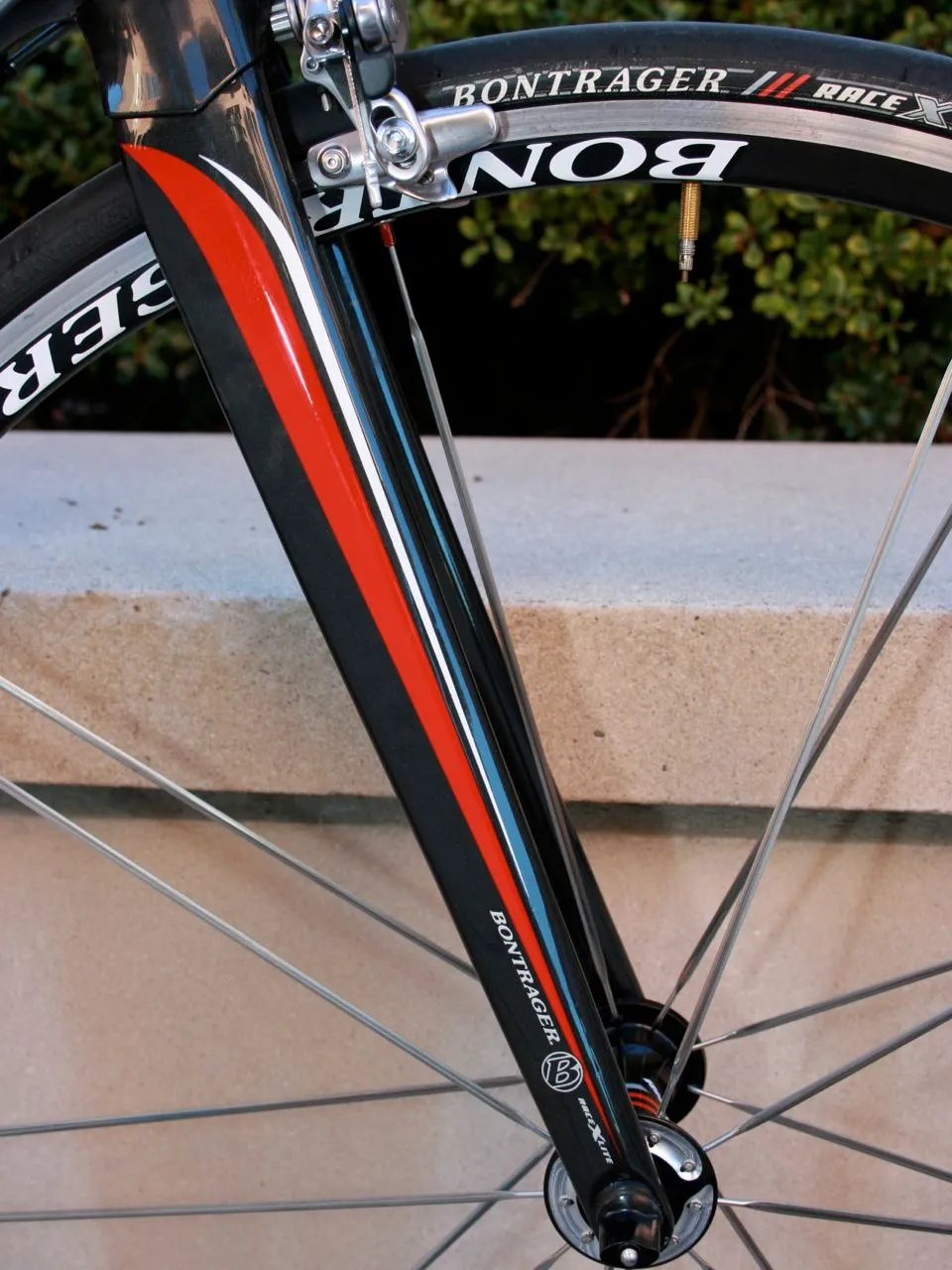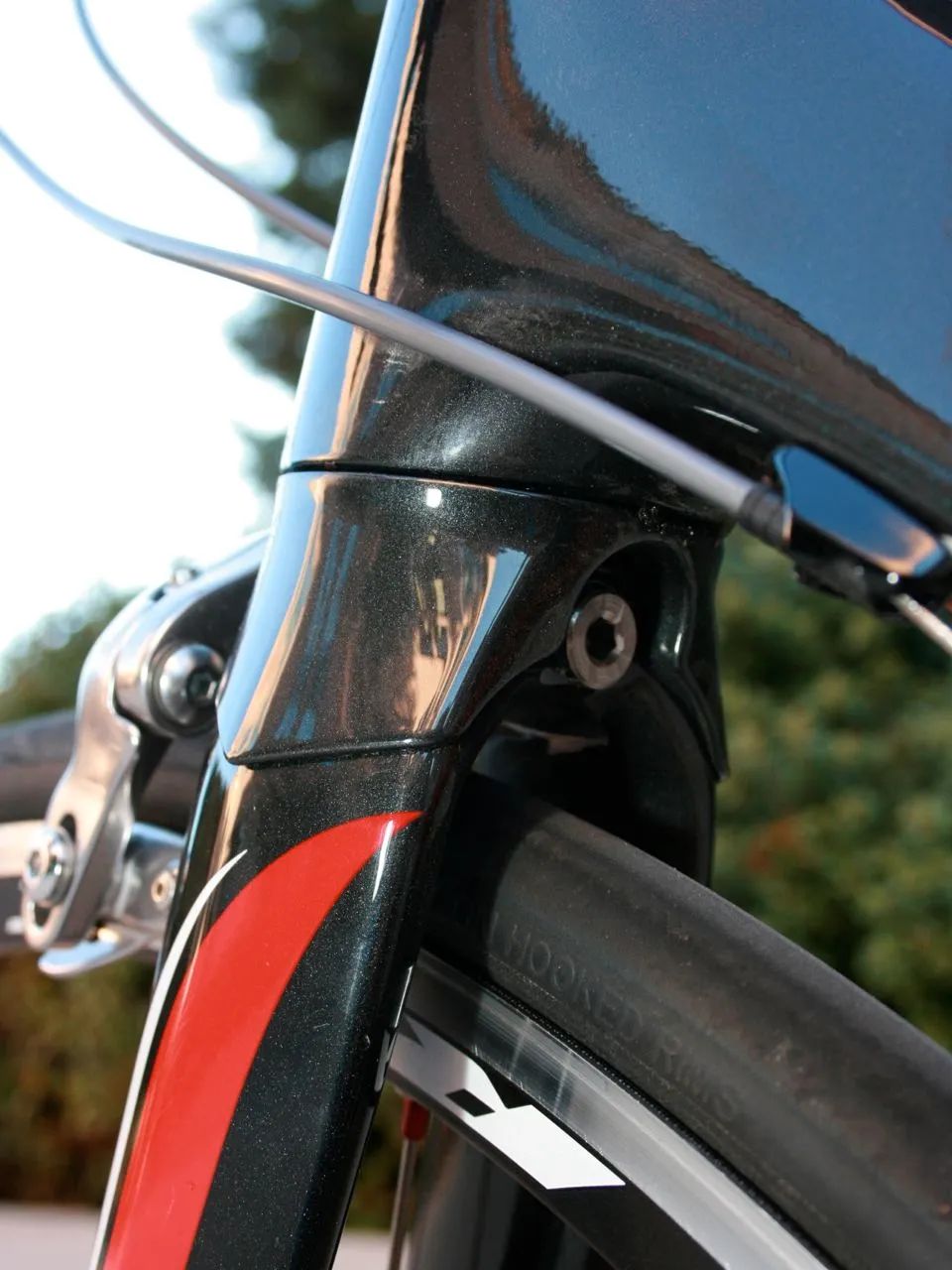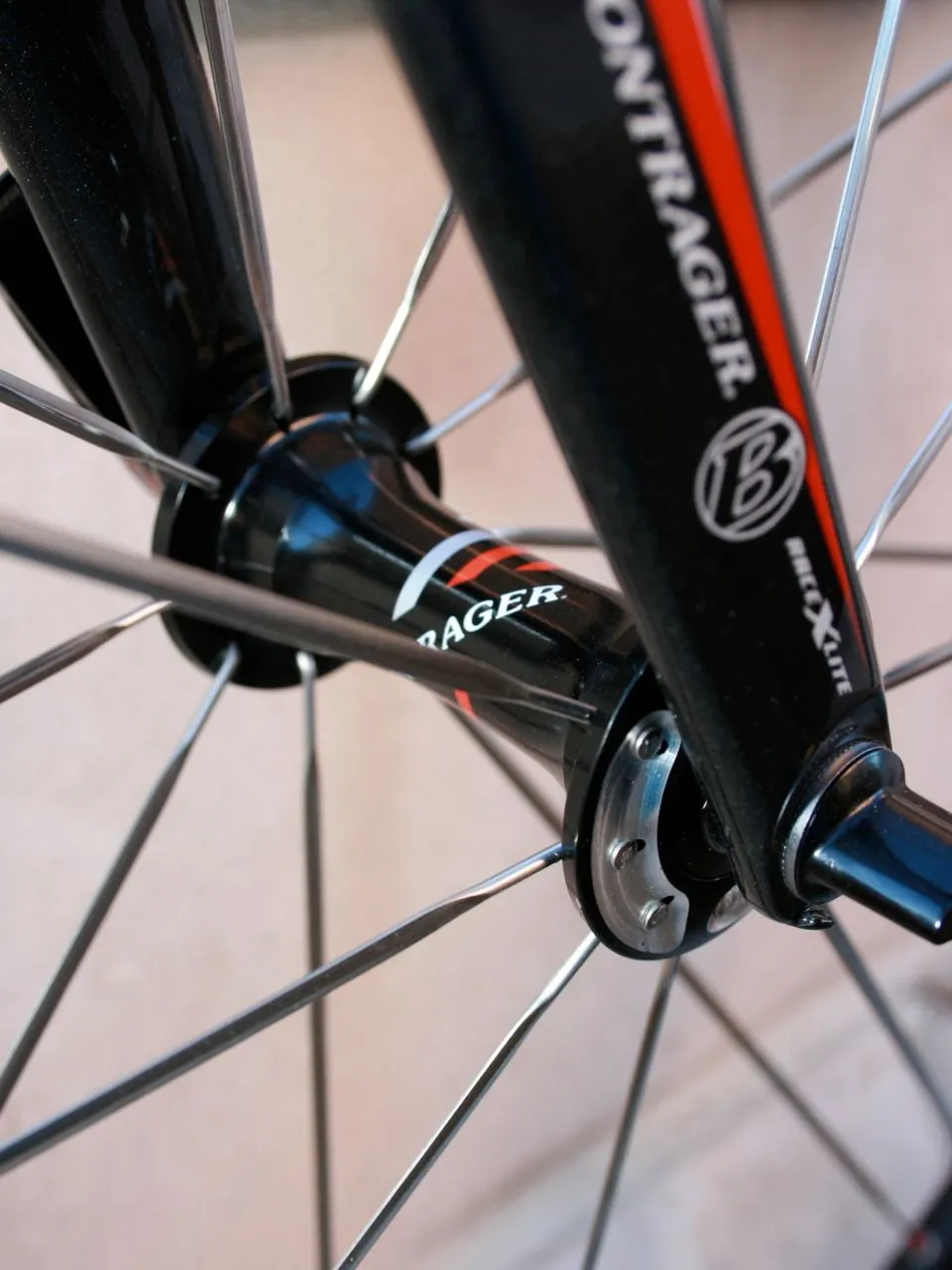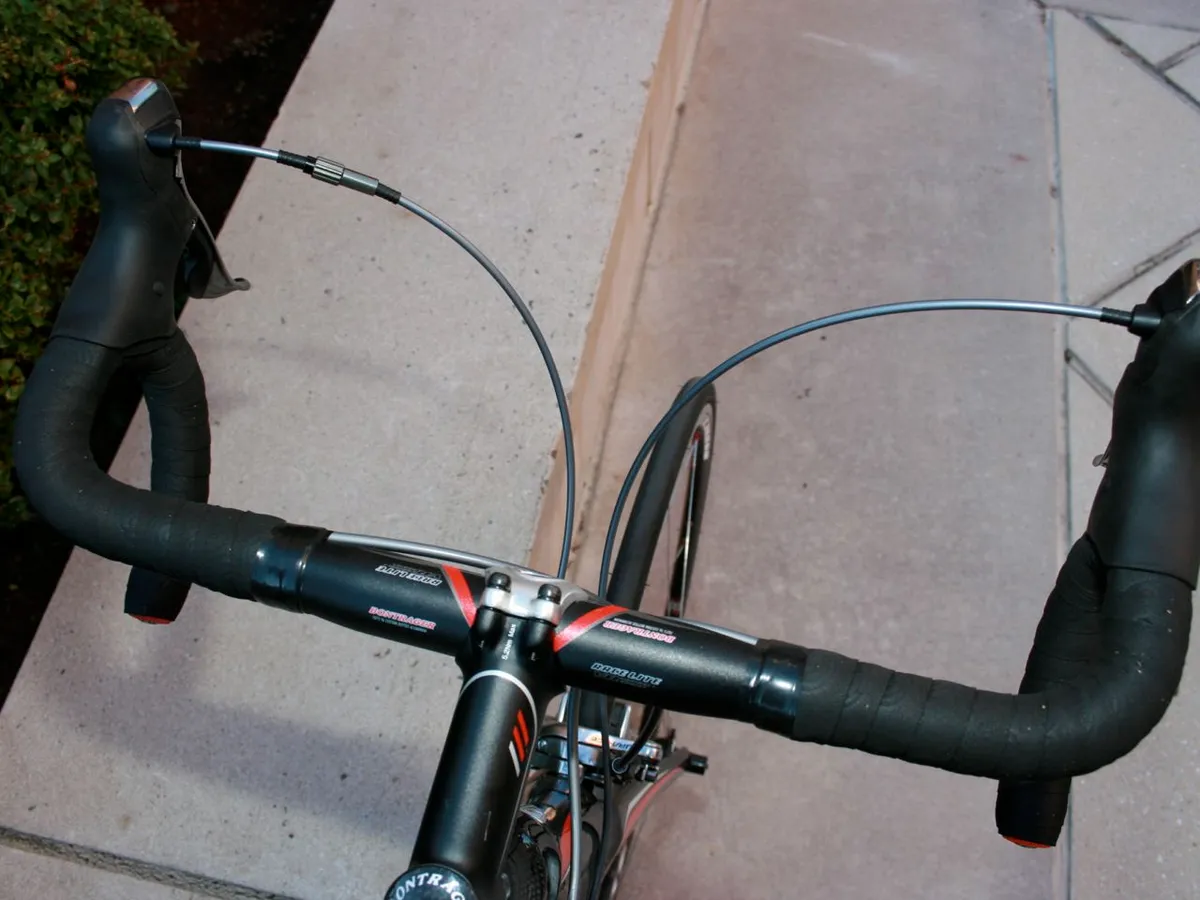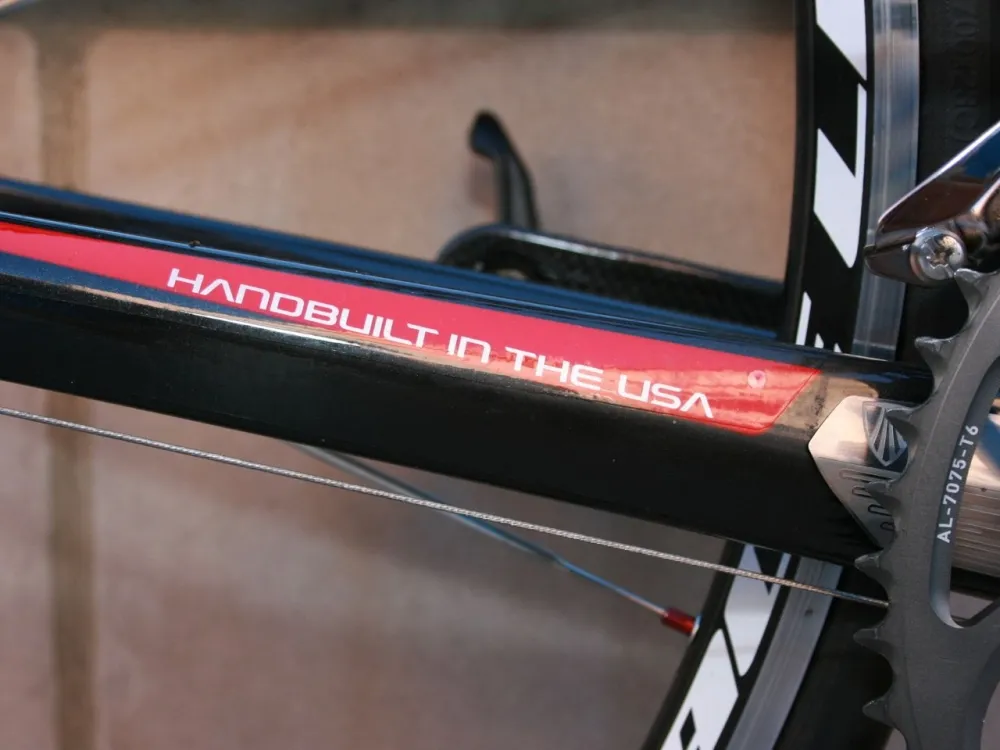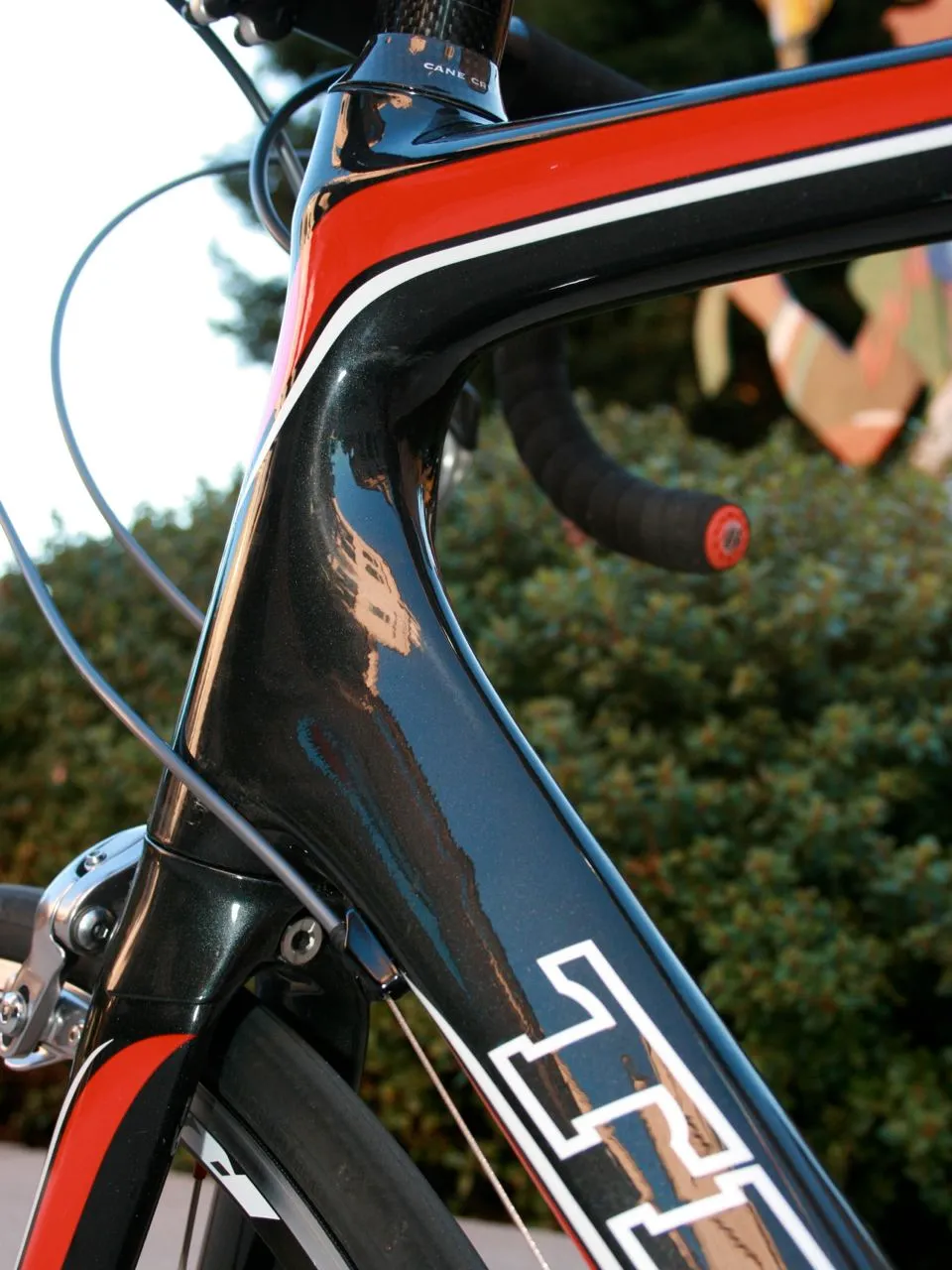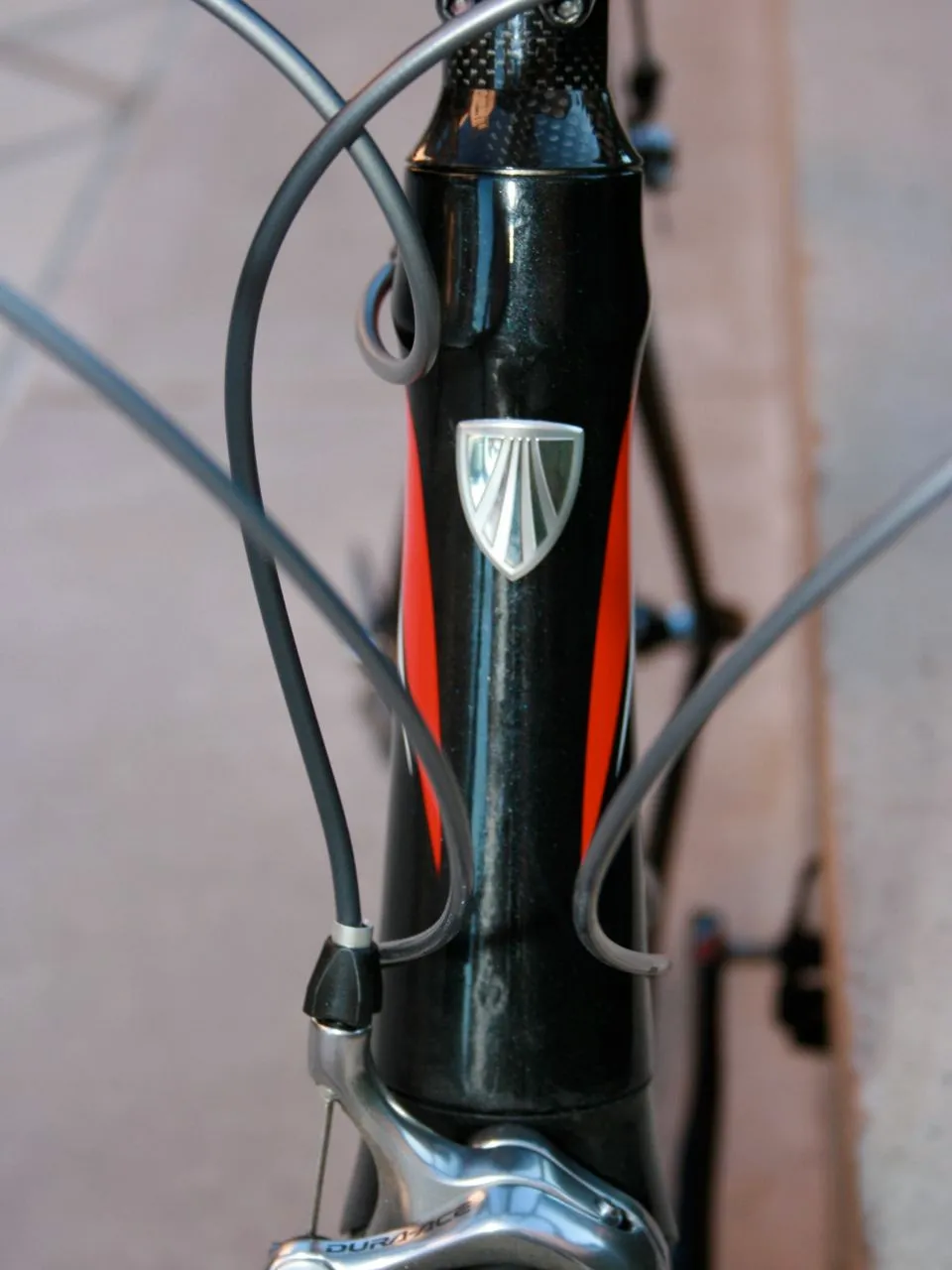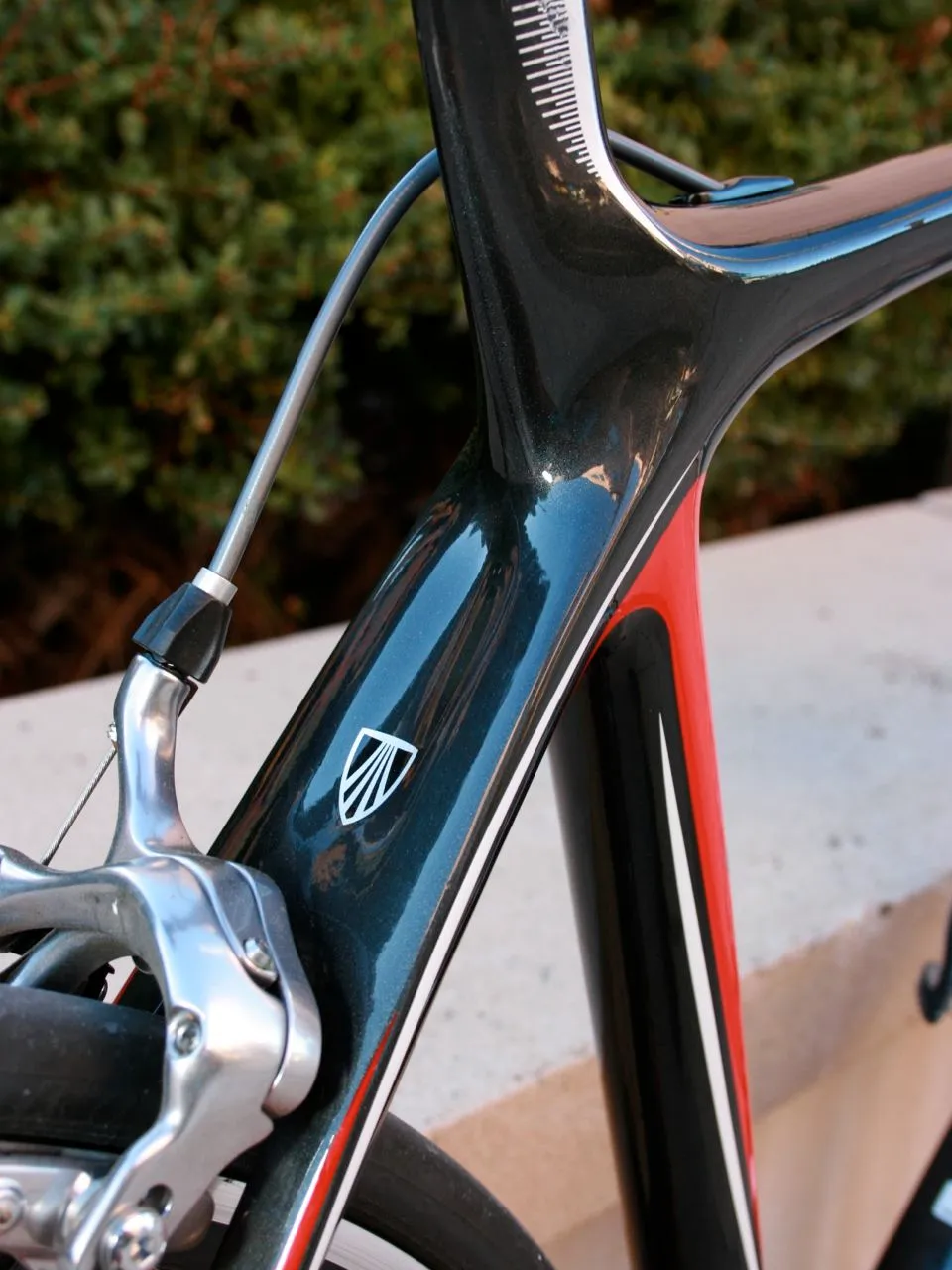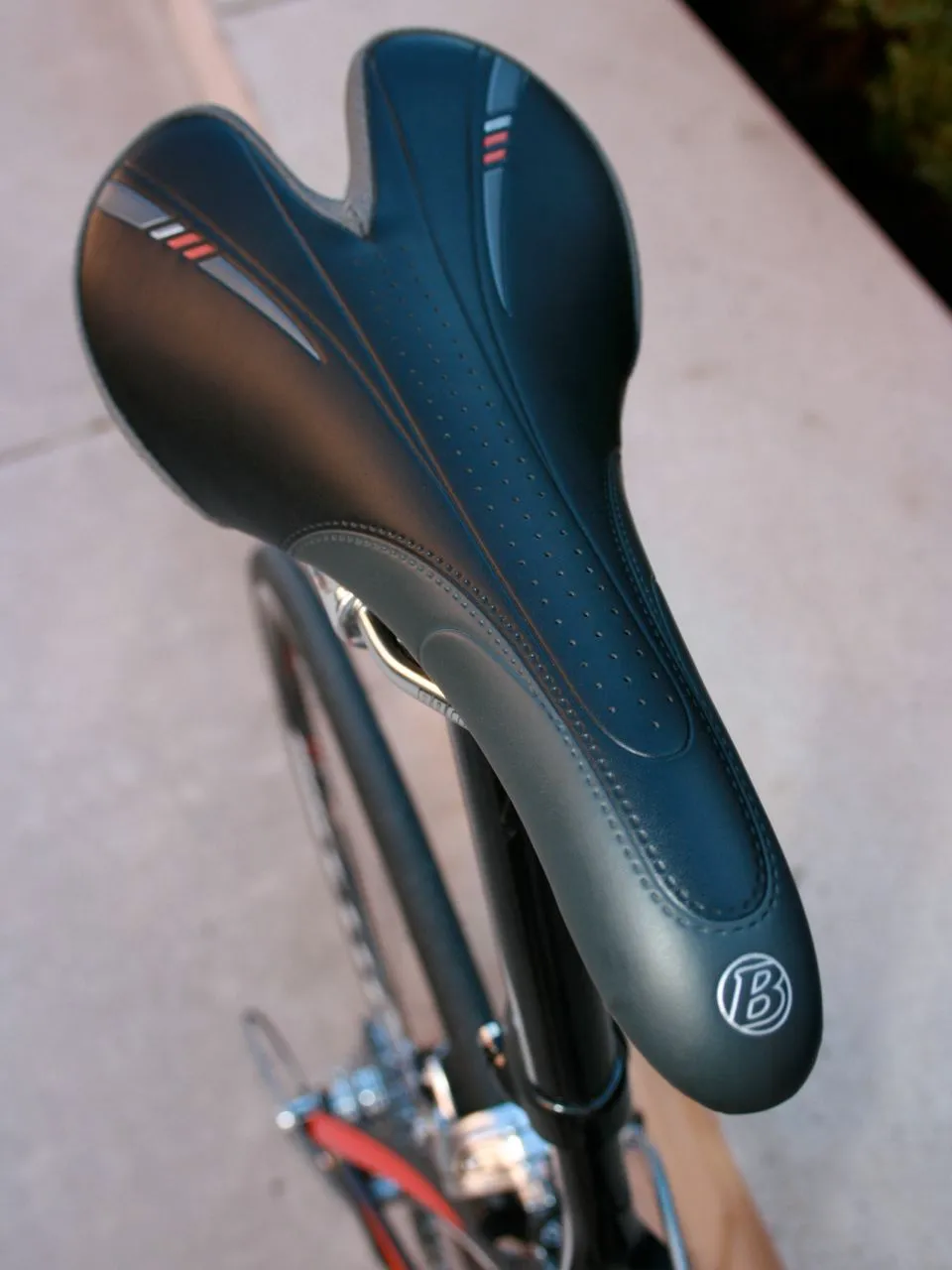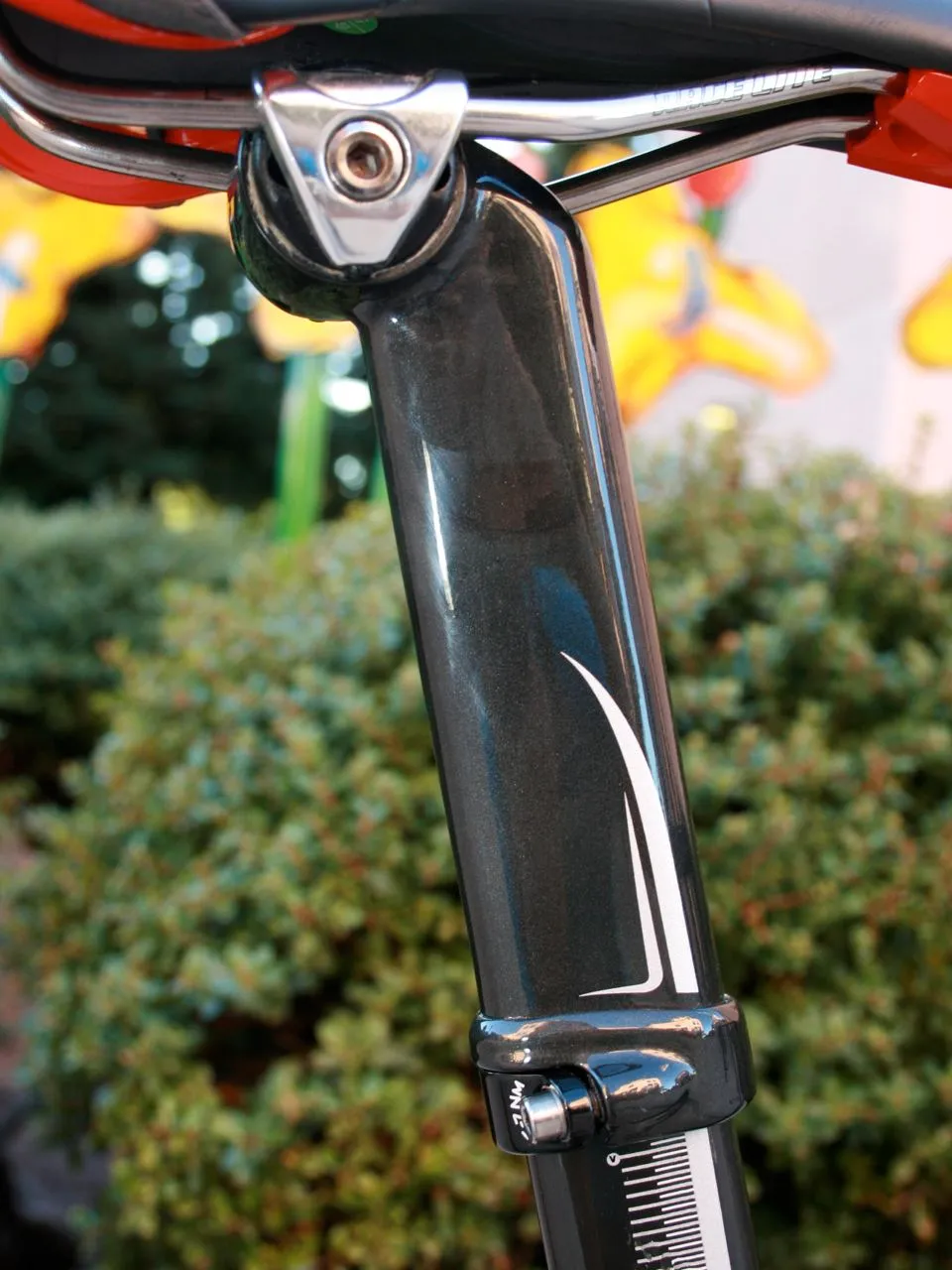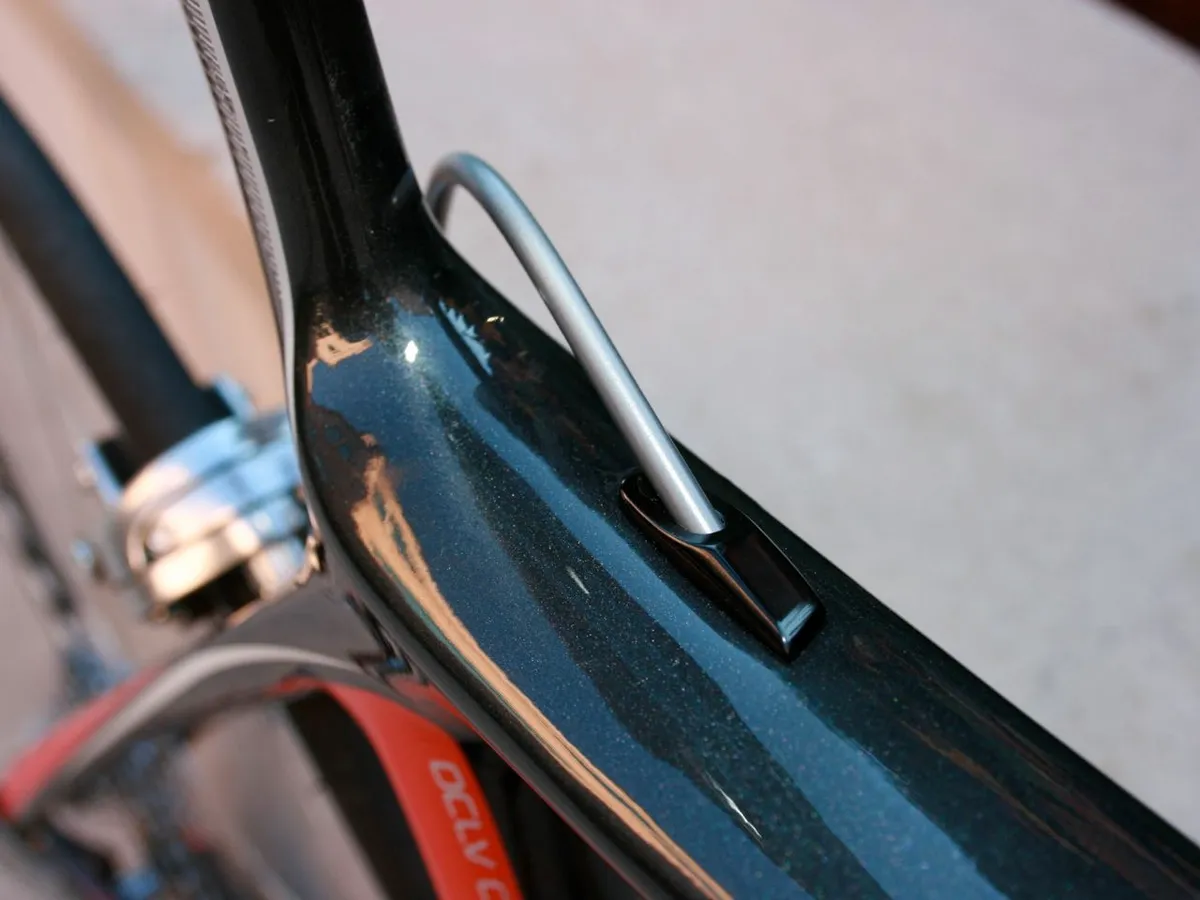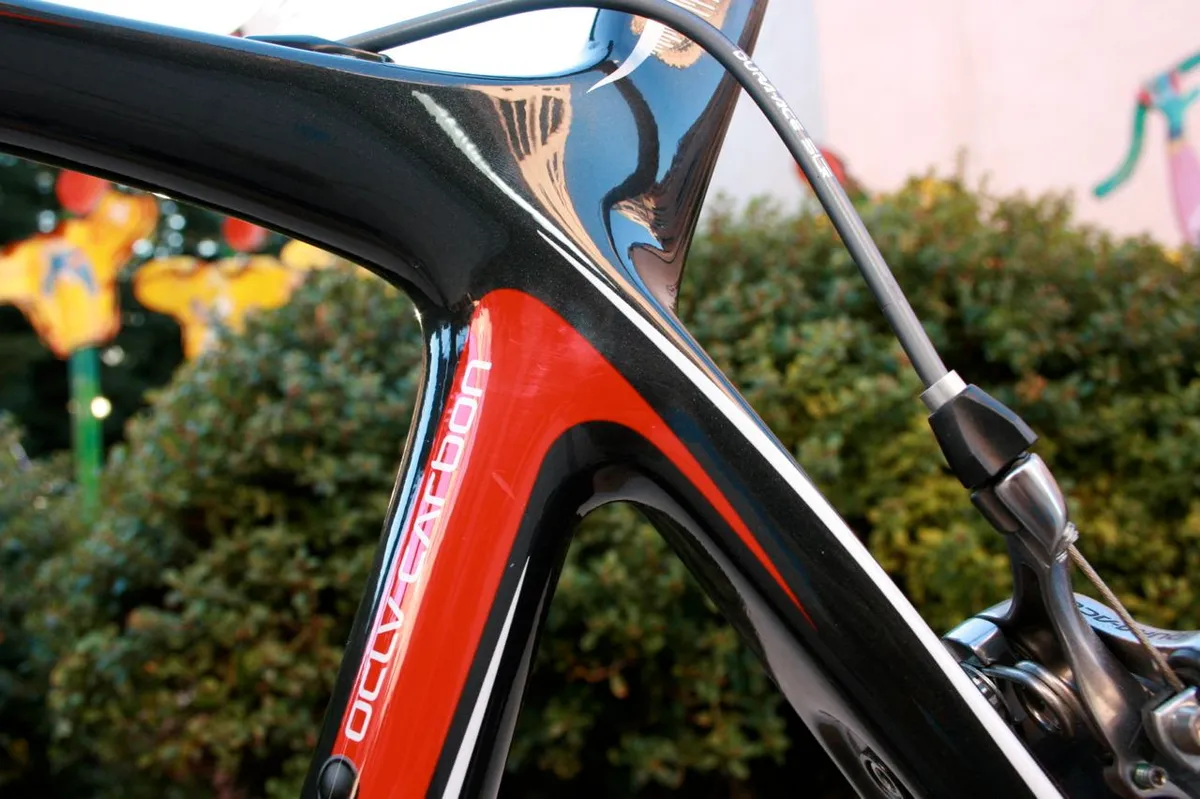The Trek Madone 5.5 proves that a hardy race heritage can apply to weekend warriors. It's a light and lively road machine that sets a benchmark for performance.
Ride & handling: Comfortable, responsive and fast
After spending a few months riding similarly specced carbon road bikes from GT and Cannondale, we found the Madone 5.5 to be more comfortable over longer periods in the saddle. Performance never lacked on the 5.5, making quick jaunts through traffic to head out on our favourite loops enjoyable.
Once we fell into a rhythm, the 5.5 proved worthy of its Tour-winning hype, never relenting under the heavy stress of steep climbing or twisty mountain road descending.
Trek has always taken a more conservative approach to geometry, and not much has changed on the 5.5. It has classic stage race geometry that yields airly relaxed, eminently stable thanks to the relatively low bottom bracket height. The slightly longish chainstays provide stability and remove the twitchiness typically found in bikes with shorter stays.
Several testers appreciated the shortish top tube, and especially liked the comfort of staying in the drops against the wind and on long descents, where feathering the brakes from the hooks is less weary and more effective than staying on top.
But, the conservative approach also made for some uninspired saddle time, according to some testers. Yes, a lightweight carbon bike is supposed to be stiff, but some testers felt that the Trek felt flat in the straightaways under speed compared to the Cannondale SuperSix,. Part of it might be due to the slightly higher handlebar position (there's a 30mm higher position compared to the more race-oriented models like the Madone Pro line).
For half our testers, the common threads were 'comfortable, responsive and fast.' One's pedaling efforts were never wasted on the 5.5, some said, a reflection of the stiff carbon frameset and paired-spoke wheels. Uninspired for some, a real rocket for others. Much of one's riding preferences hinge on body type (tall and thin vs short and muscular), position and experience. All things considered, The Madone 5.5 averaged a mostly neutral response from our testers. Taking the middle ground is a safe bet for Trek, one of the largest bike companies in the world.
Frameset: New OCLV names, more simplicity
Trek’s Optimum Compaction Low Void (OCLV) technology, in a nutshell, applies heat and pressure during the manufacturing process to compress carbon and resin for maximum strength and minimum weight, while eliminating gaps between carbon layers to improve strength-to-weight. Trek's lay-up process includes cutting specific carbon parts (for head tube, down tube, top tube, etc.) with a specifically directed carbon angle to better position the fiber for the loads and stresses a frame experiences under the rider.
For 2008, Trekrenamed its three levels of OCLV: Red, Black and White, a new nomenclature to make things easier to understand compared to the old ‘OCLV 55’, ‘OCLV 110’ reference. The Madone 5.5 is an OCLV Black level, which uses intermediate modulus carbon fibre compared to the Red's significant high modulus content.
This second-tier status affects overall weight a tad, though, as our 58cm sample weighed in at 16.1lbs. Black series frames are 120g heavier and the alloy steerer adds another 90g relative to the Red series, according to Trek's road brand manager Scott Daubert.
A few highlights of the re-engineered Madone line include several weight-saving enhancements, including a slip fit bottom bracket bearings versus the external cups that have become the norm; a tapered carbon fork (1-1/8in down to 1.5in at the crown, which, like its bottom bracket shell brother, needs less parts due to Trek's Net Molding Technology (carbon race surfaces to eliminate heavy aluminium parts, making the bottom bracket and headset assembly simpler and lighter). Instead of the 68mm shell width standard, where the bearing cups are screwed into an aluminium insert and the bearings are housed outside the shell, Trek uses a 90mm shell to house everything. The benefit here is a stiffer junction at the prime pedaling force, and Trek has also made the effort to provide Campagnolo-, Shimano- and SRAM-specific crank kit bearings available.
The 5.5 has a 30mm taller headtube than the Pro fit, which our newer road riders appreciated. Trek offers two fit options. Other than head tube length, everything else is identical on the frame but the stems are also 1cm shorter than Pro fit. A higher handlebar position isn't for everyone, though, and Trek generously provided several headset spacers to allow riders the option to lower the stem without compromising the handling.
As for dialing one's optimal saddle height, Trek designed a carbon seat cap with 100mm of adjustability. Not comfortable with offering a carbon seat tube that requires cutting, Trek shaved off some weight and simplified one of the most important aspects of proper fit. The saddle clamp also offers six degrees of spherical adjustment to account for less-than-perfect saddle rails.
Equipment: Race-proven and serviceable
Shimano's race-proven and reliable Dura-Ace shifters, brake calipers, and derailleurs work seamlessly to propel and stop the Madone 5.5. In fact, most everything offered by Shimano's road team can boast the same. The difference between the top-of-the-line Dura-Ace and its lower grade brothers is two fold: lighter and more responsive for most riders, and bragging rights. Who wouldn't want to ride what half the pro peloton uses? In our opinion, an American-made carbon frameset of this caliber specced with Dura-Ace and priced at US$4,400 is bargain.
Trek balances off its complete bike spec with a hearty dose of its Bontrager house brand. Tour-proven spec, mind you, that doesn't scrimp on performance or quality. Trek has raised the bar considerably with its Bontrager Race Lite wheels and saddle, two areas very particular and personal for discerning riders in this price range. The Race Lite wheels are built with 3.6mm bladed stainless steel 18/20 front/rear spokes, weighing 1660g for the pair. The external nipples are a blessing, but for the inexperienced the paired spokes are a curse. Be thankful for Bontrager's high-tension attention to wheel strength in its factory build, though. In the five months we've tested the Madone 5.5. we haven't needed to re-tension or tweak the wheels. Part of this comes from proper tyre inflation, of course, and it helps that the Bontrager Race X Lite 700x23c clinchers behaved the entire test period. Nary a flat, always rolling hard over the rough stuff, and keeping us steady in sprints and climbs while offering enough stickiness through turns.
Bontrager's cockpit has improved dramatically. The Race Lite VR handlebars are square and wide on the tops as needed, while providing the medium drop and reach that comes natural for most riders for hard sprinting, climbing and descending, thanks to its semi-anatomic bend. The now-standard 31.8mm clamp diameter gives the front end of the bike a needed beefiness to match the beefy oversized headtube and fork crown. Trek was smart to spec aluminium stem and bars, which are more durable for more riders compared to carbon. What little road shock reverberating through the front end is absorbed by the clever Bontrager Buzz-Kill bar-end plugs.
The Bontrager Race Lite saddle, like the Specialized Body Geometry, isn't for everybody. Many riders snooping around this price point will have tried the very popular Fi'zi:k Arione saddle - which we think looks like a ironing board - but has become the default saddle for many hard-core racers and riders. The Race Lite has its high points, namely reinforced wings for durability in a crash. But, as we've found with several Bontrager saddles the past year, the saddle’s super rounded profile isn’t for everyone.
The Bontrager Race X Lite carbon compact crankset shifts well and provides the lower gears that this bike’s likely riders prefer. Not the lightest, but performance may mean more to some riders.
Verdict: American-made speed, readily available
Trek is one of the most popular bike brands in the world, and its Madone line reflects its commitment to staying with the times. Extended carbon seat tubes, oversized and tapered head tubes, oversized slip-fit bottom bracket bearings: these are all desirable features that translate to benefits on the road and for the rider. Simplicity is key with high performance, and it's apparent that Trek has invested heavily in taking its signature line to the next level. The best part? Mere mortals like you and me being able to ride the same bike as the guy winning the Tour and Giro. The Madone 5.5 may be mostly neutral on the road, but overall it's a safe bet for the weekend warrior interested in flying the flag that Lance and Alberto raised to the top of the podium since 1999.
